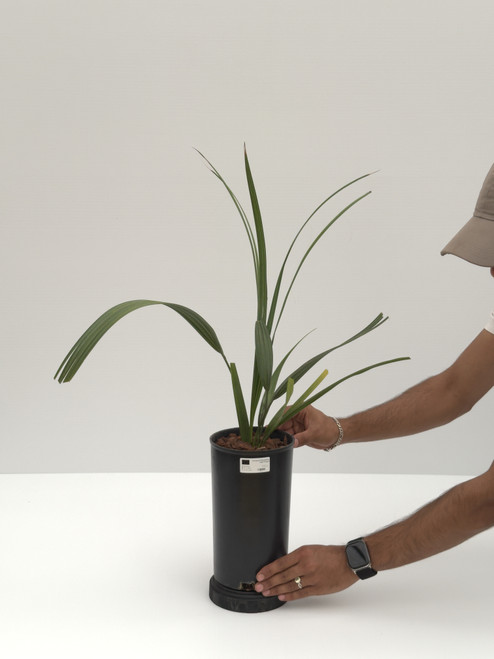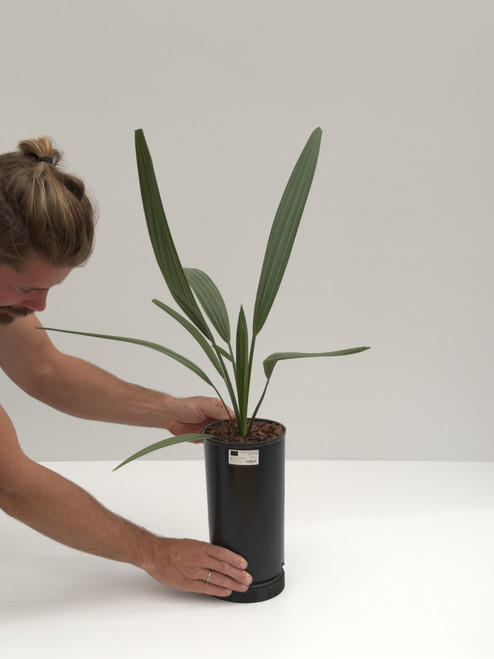Product Description
Habitat and Distribution
Sabal bermudana is endemic to Bermuda. This tree is found island-wide in upland and coastal forests and freshwater marsh habitats. It does well in most situations and habitats, except the most salty, and makes a nice garden tree. This is the only palm species indigenous to Bermuda; all others were introduced.
Description
Sabal bermudana grows up to 25 m (82 ft) in height, with the occasional old tree growing up to 30 m (98 ft) in height, with a trunk up to 55 cm (22 in) in diameter. It is a fan palm (Arecaceae tribe Corypheae), with the leaves with a bare petiole terminating in a rounded fan of numerous leaflets. Each leaf is 1.5–2 m (4.9–6.6 ft) long, with 45-60 leaflets up to 75 cm (30 in) long. The flowers are yellowish-white, 5 mm (0.20 in) across, produced in large panicles up to 2.5 m (8.2 ft) long, extending out beyond the leaves. The fruit is a deep brown to black drupe about 1 cm (0.39 in) long containing a single seed. It is extremely salt-tolerant and is often seen growing near the Atlantic Ocean coast in Bermuda, and also frost-tolerant, surviving short periods of temperatures as low as -14 °C, although it will never get that cold in Bermuda. Editing by edric.
Sabal bermudana is a slow growing evergreen palm tree with a single stem. Its mid green leaves are arranged in a fan shape composed of up to 60 leaflets and up to 2 m long. Each leaflet is up to 1 m long. Its trunk may achieve a diameter of up to 55 cm. Its yellow/ white flowers are up to 5 mm across and are arranged in panicles which are up to 2.5 m long. Its dark brown/ black fruit is a drupe and is up to 1cm long.
Culture
A very easy and adaptable palm that will grow in temperate areas just as well as in the tropics and can take a good amount of frost and cold. Cold Hardiness Zone: 9a. Reported little damage to -10 C.





















